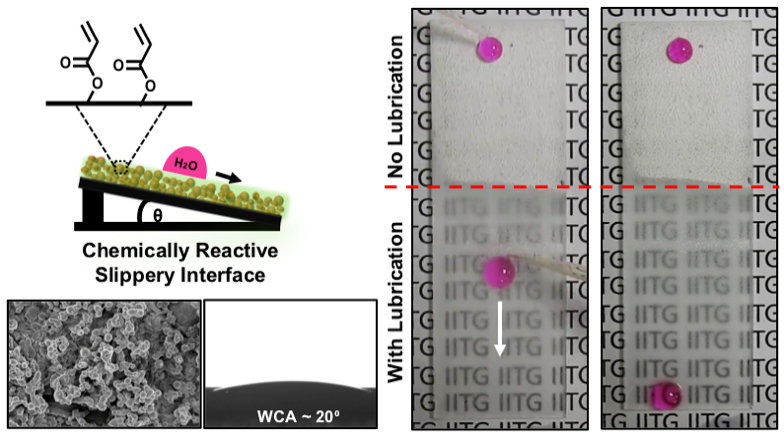
How Does Chemistry Influence Liquid Wettability on Liquid Infused Porous Surface?
-
Author:
K. Maji, A. Das, M. Hirtz, U. Manna
-
Source:
ACS Appl. Mater. Interfaces 12 (2020) 14531-14541
- Date: 2020
-
Design of Nepenthes Pitcher inspired slippery liquid infused porous surface (SLIPS) appeared as an important avenue for various potential and practically relevant applications. In general, hydrophobic baselayers were infused with selected liquid lubricants for developing chemically inert SLIPS. Here, in this current study, an inherently hydrophilic (soaked beaded water droplet with ~20 degree within a couple of minutes), porous and thick (above 200 µm) polymeric coating, loaded with readily chemically reactive acrylate moieties yielded a chemically reactive SLIPS, where residual acrylate groups in the synthesized hydrophilic and porous interface rendered stability to the infused lubricants. The chemically reactive SLIPS is capable of reacting with solutions of primary amine-containing nucleophiles in organic solvent through 1,4 conjugate addition reaction, both in the presence (referred as ‘in-situ’ modification) and absence (denoted as pre-modification) of lubricated phase in the porous polymeric coating. Such amine-reactive SLIPS was further extended to 1) examine the impact of different chemical modifications on the performance of SLIPS and 2) developing a spatially-selective and ‘in-situ’ post-modification with primary amine-containing nucleophiles through 1,4 conjugate addition reaction. Moreover, the chemically reactive SLIPS was capable of sustaining various physical abrasions and prolonged (minimum 10 days) exposures to complex and harsh aqueous phases, where the infused lubricant protects the residual acrylate groups from degredation. Such principle will be certainly useful for spatially-selective covalent immobilization of water-insoluble functional molecules/polymers directly from organic solvents, which would be potential interest for various applied and fundamental contexts.
